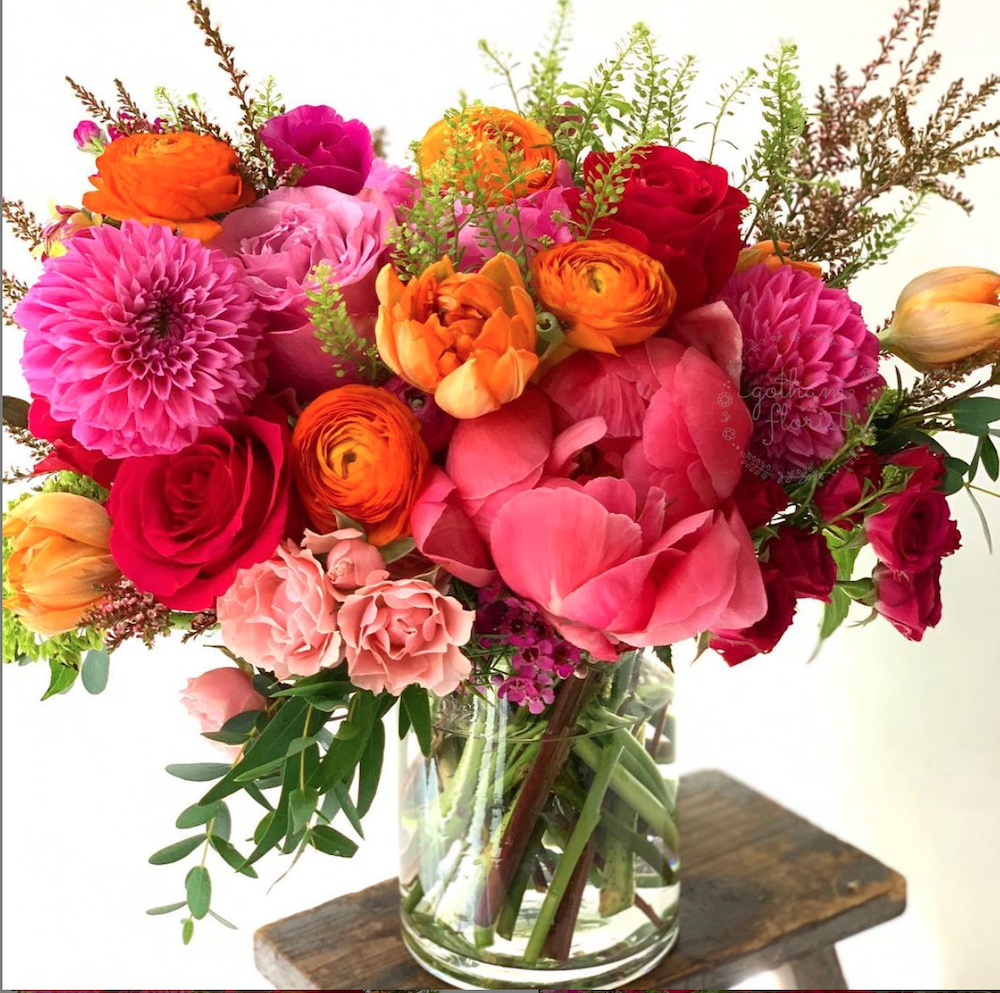For “Cheer Up the Lonely” Day, Give Someone Flowers
By Jill Brooke

This is “Cheer Up the Lonely” day and maybe we should expand it to be for the month and even the year.
And what better way to make the world a better place than sending flowers or even walking to a neighbor’s and giving them a rose, zinnia or sunflower from your backyard. Or even have your child draw a flower on a card.
As reported in Harvard Magazine, social psychologists define loneliness as the gap between the social connections you would like to have and those you feel.
Prior to the pandemic, in 2018, a report by the Henry J. Kaiser Foundations found that 22 percent of adults in the U.S. say they often or always feel lonely or socially isolated. Many men in another study reported not having a friend they can speak to confidentially.
It used to be understood that older adults were at risk for loneliness because they were facing living alone as a result of widowhood or divorce, a loss of family and friends or chronic illness.
But recent studies have shown young people including students and young adults are feel lonely. The pandemic, with at-home schooling and “social distancing”, accelerated a growing trend.
“I was surprised at the degree of loneliness among young people,” said Richard Weissbourd, a psychologist and senior lecturer at the Harvard Graduate School of Education (HGSE) who helped lead the research. “If you look at other studies on the elderly, their rates of loneliness are high, but they don’t seem to be as high as they are for young people.”
Noreena Hertz, the author of “The Lonely Century: How to Restore Human Connection in a World That’s Pulling Apart,” pointed out that one in five millennials in the U.S. say they have no friends, according to a 2019 survey, sixty percent of residents in U.S. nursing homes have no visitors and in Japan, people over 65 routinely commit crimes so they can avoid social isolation by living in jail.
“As we emerge from this prolonged period of social isolation, we can commit to making this a summer of reconnection,” she suggests. “This means rushing less and stopping to talk more, whether to a neighbor, a postal carrier or someone who appears to be lonely. It means breaking out of our self-suffocating digital privacy bubbles and engaging with those around us, even when our default is to scroll on our phones. It means showing more gratitude to those who care for others in society and saying thank you more to our partners, our friends, our colleagues.”
A great start is giving someone flowers.
During the pandemic, flower sales surged because these beautiful entities can express emotions people sometimes have trouble with words saying and also validate that someone is thinking about a friend, a relative or someone in need of positivity.
Built into a flower’s biological structure is the ability to express feelings of grief and gladness, sympathy and joy, hope and courage.
What’s also fascinating is that comfort happens between the giver and the receiver.
Dr. Loretta Graziano Breuning, a professor emerita of management at California State University and the author of “Habits of a Happy Brain,” says that flowers stimulate social trust in group dynamics in many ways.
“They communicate the intention to invest effort in a relationship,” she says. “They also convey respect for fragility. We feel the impermanence of flowers, and it reminds us that care is necessary to sustain life.”
Plus, she says, giving flowers boosts serotonin, the chemical often mentioned regarding antidepressants. Receiving flowers shows you matter to someone and makes you feel more connected to the world and have a status in it.
So consider giving someone you see feeling blue a bouquet of flowers, or even just one flower. At the very least, you will be making someone feel that they are not alone. That little gesture can make all the difference.
 Photo Credit: 1st image – Dandelion Floral Art, 2nd – Gotham Florist
Photo Credit: 1st image – Dandelion Floral Art, 2nd – Gotham Florist
